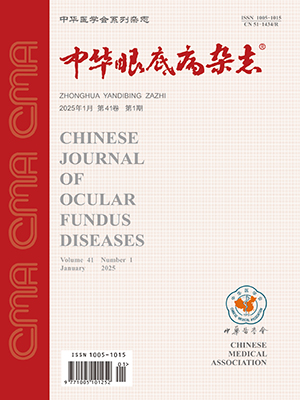The Evidence-based guidelines for diagnosis and treatment of age-related macular degeneration in China (2023) is the first evidence-based clinical practice guidelines for the diagnosis and treatment of age-related macular degeneration (AMD) in China that strictly follows the WHO guideline formulation and international guideline standards. Based on the latest evidence-based medical evidence and the rapid development of ocular fundus imaging technology, the new version of the guidelines has been updated in the diagnosis, treatment and follow-up of AMD. Based on the origin and presence of neovascularization in retinal tissue, the macular neovascularizations are divided into type 1, type 2 and type 3 macular neovascularization (MNV). Optical coherence tomography (OCT) plus OCT angiography is recommended as the useful diagnostic method in neovascular AMD patients. Antioxidant vitamins, zinc, lutein, zeaxanthin, or a mix of antioxidant vitamins and minerals are recommended to prevent the progression of early to intermediate AMD. Intravitreal administration of anti-vascular endothelial growth factor (VEGF) agents is the first-line treatment for neovascular AMD, and once a month for the first 3 months plus treatment and prolonged administration regimen shows benefit to a certain extent. For poor response and non-response neovascular AMD patients, the clinician should decide the next treatment plan based on comprehensive consideration. Close observation is recommended for non-exudative MNV, and anti-VEGF therapy should be used promptly once non-exudative MNV transfer to exudative MNV. It is hoped that this guideline will improve the diagnosis, treatment, prevention and follow-up of AMD in China.
Citation: Xu Xun, Liu Kun, Su Li. Update points in the Evidence-based guidelines for diagnosis and treatment of age-related macular degeneration in China (2023). Chinese Journal of Ocular Fundus Diseases, 2023, 39(11): 879-882. doi: 10.3760/cma.j.cn511434-20231031-00435 Copy
Copyright © the editorial department of Chinese Journal of Ocular Fundus Diseases of West China Medical Publisher. All rights reserved




